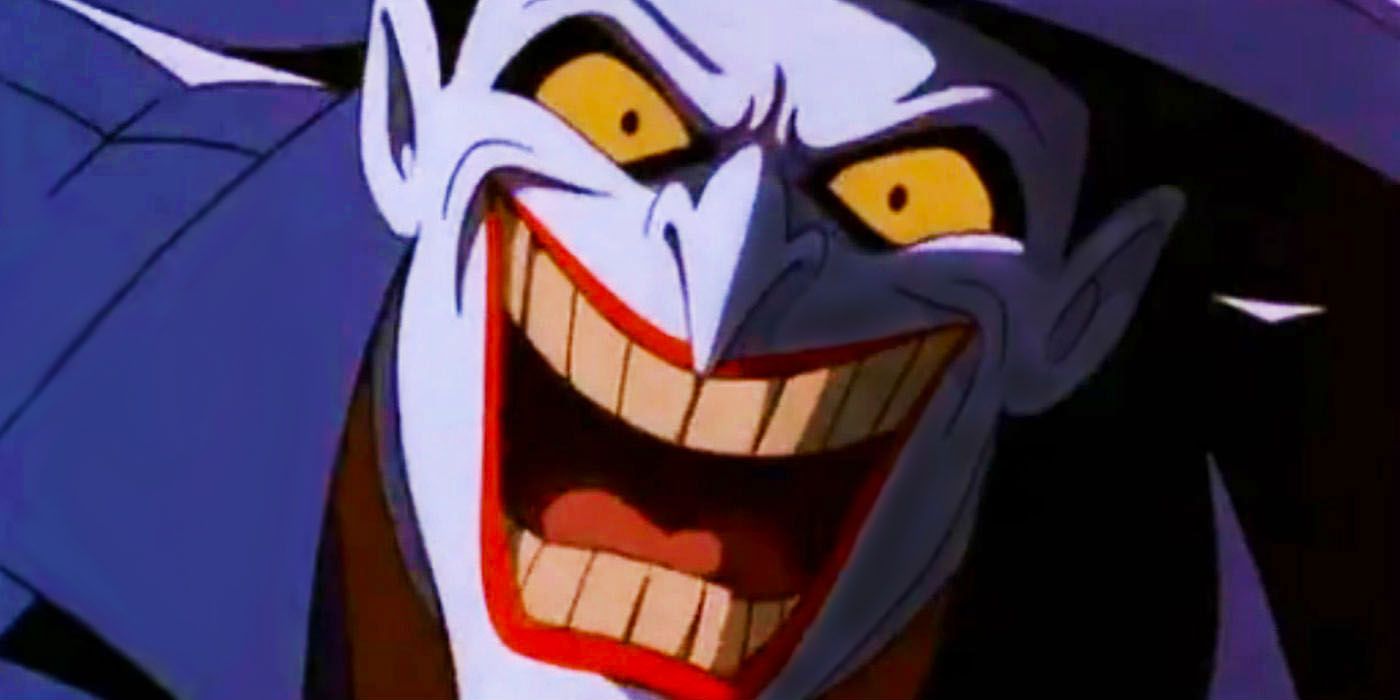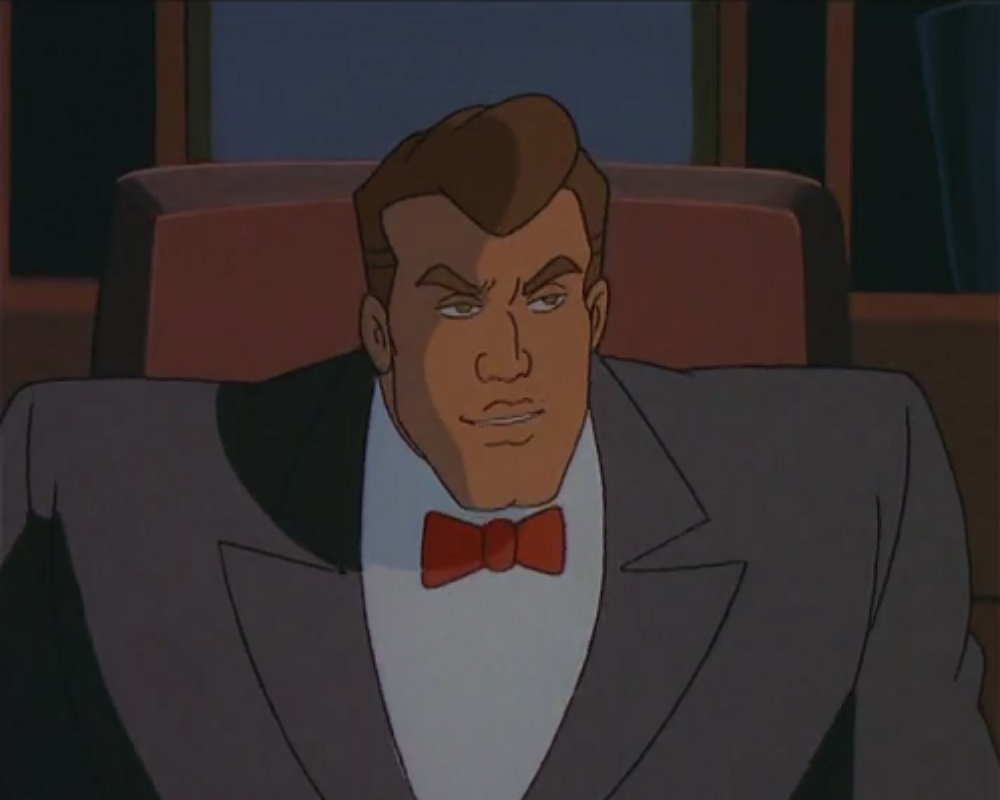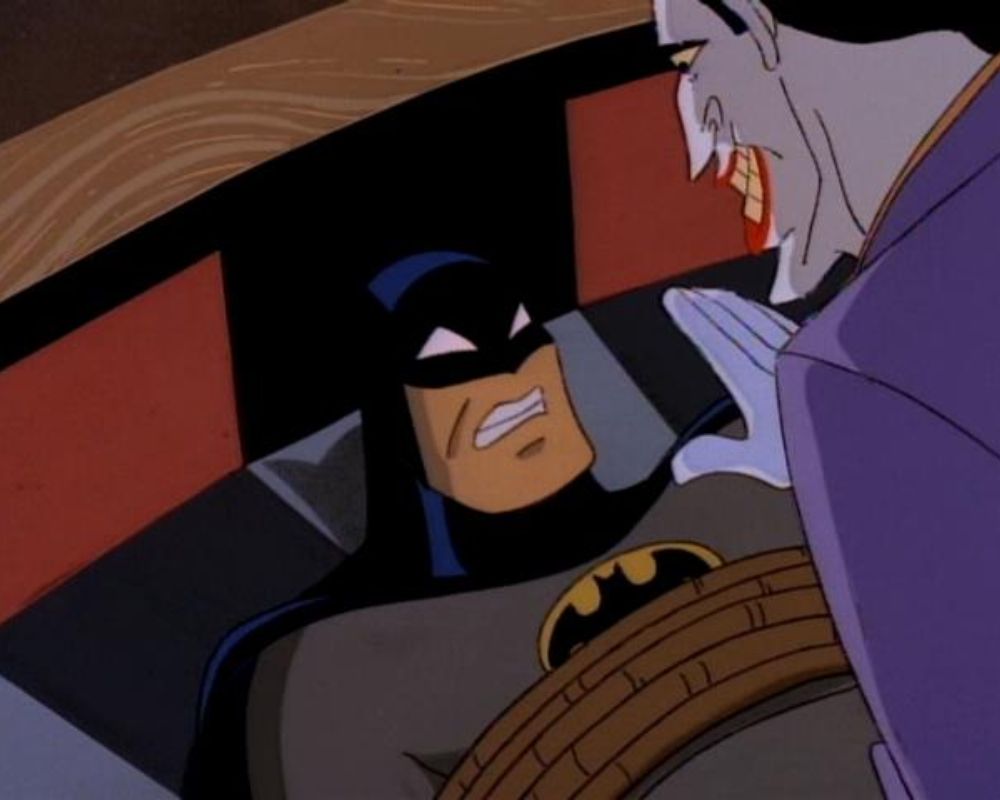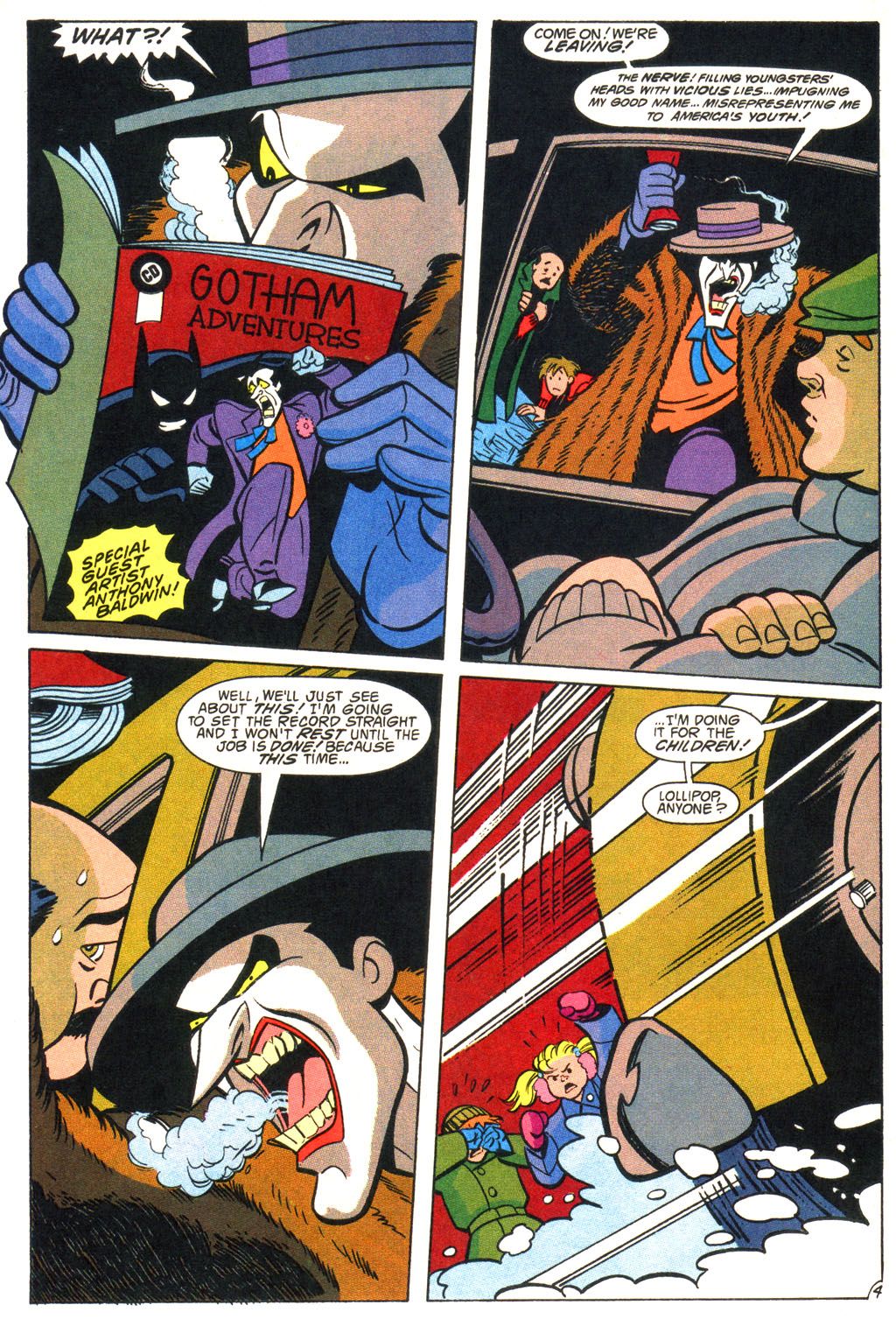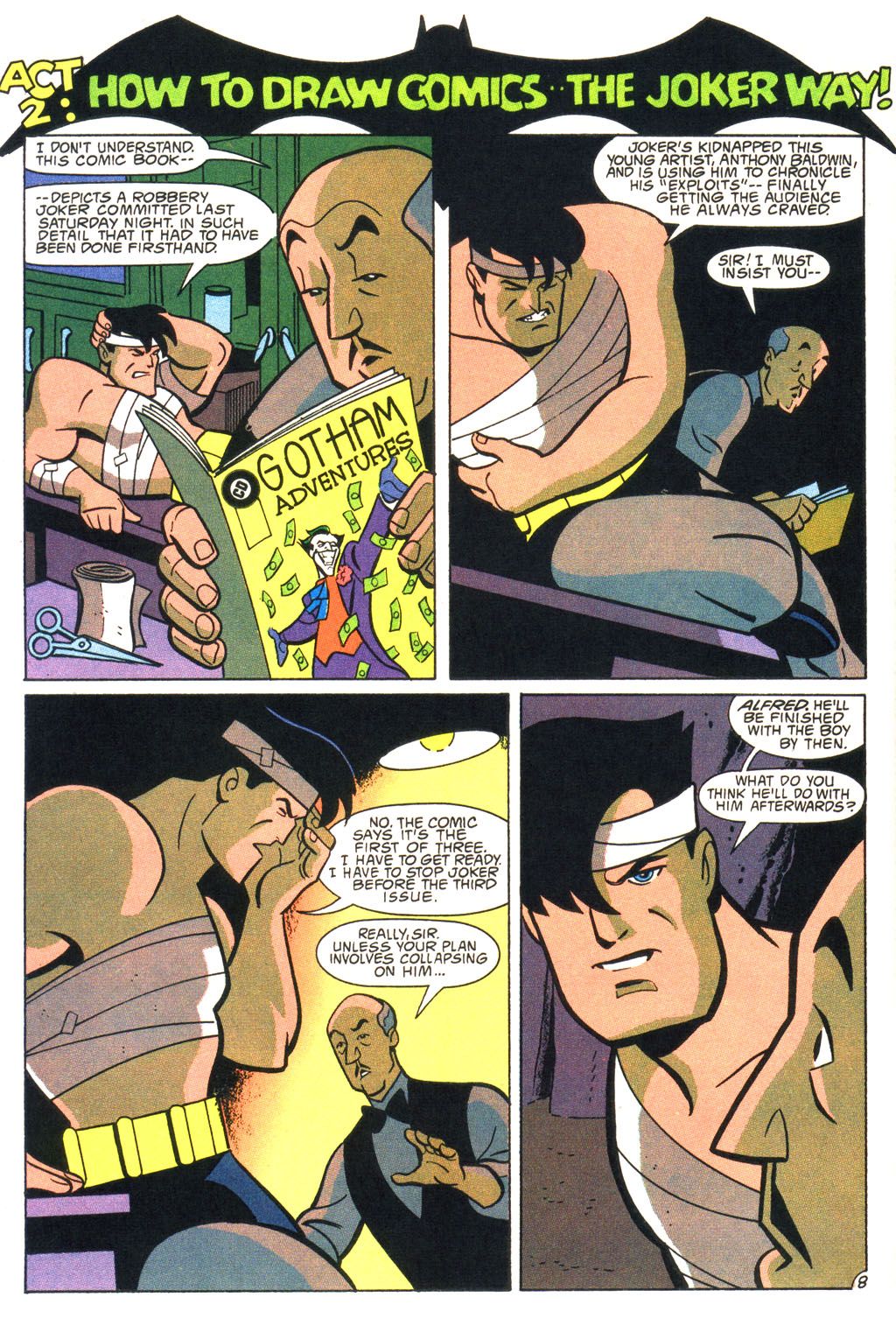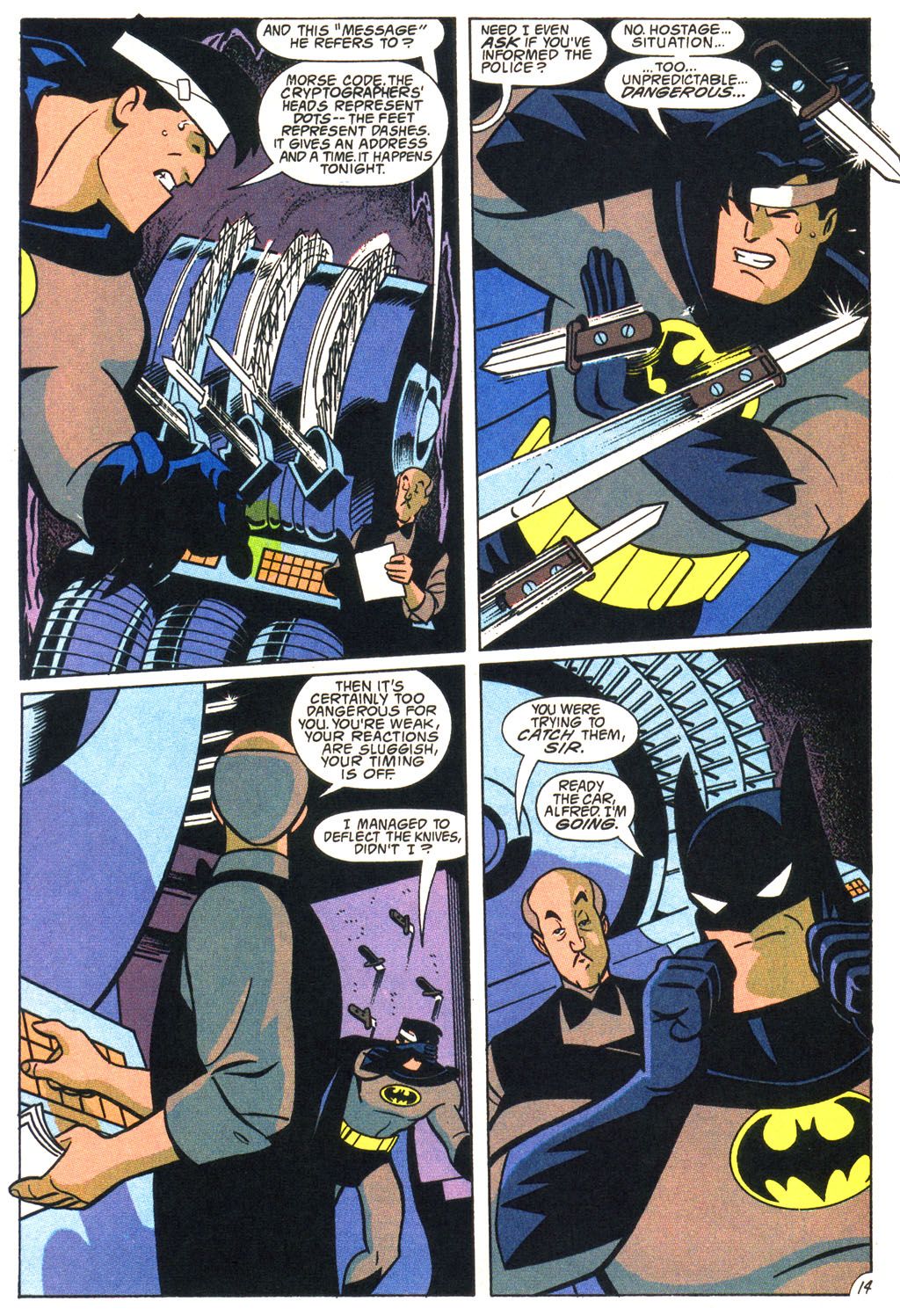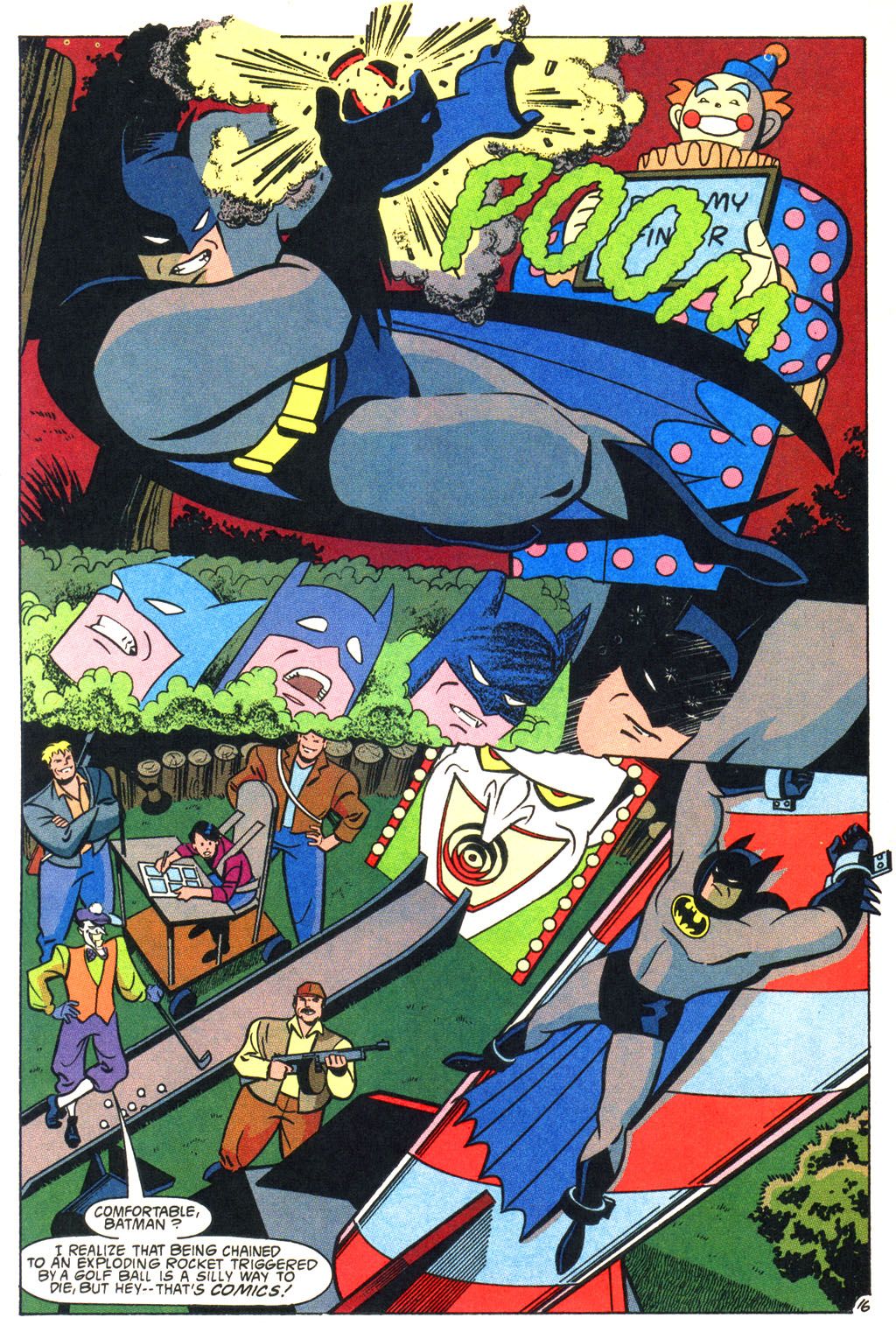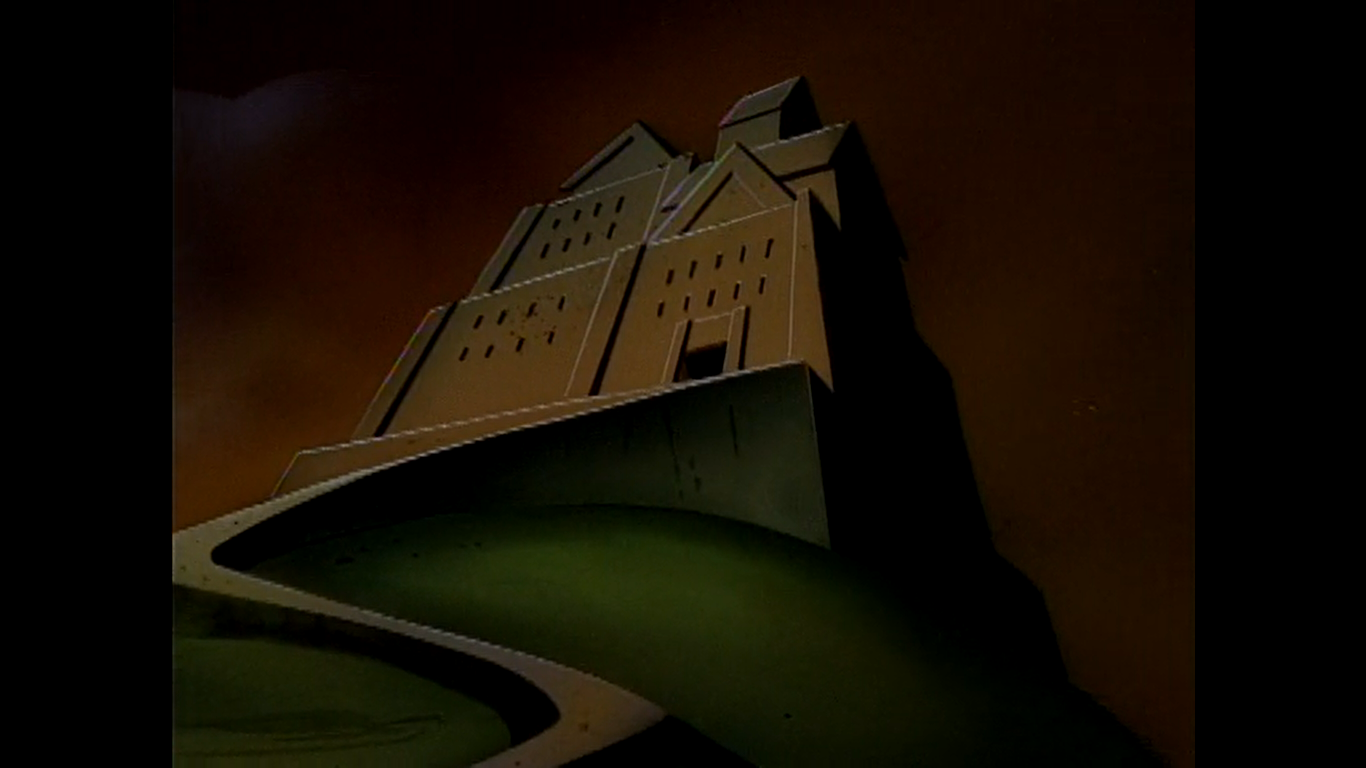Welcome to Adventure(s) Time's fifty-sixth installment, a look at animated heroes of the past. This week, we examine a lesson taught by both Batman: The Animated Series and its tie-in comic: Do not ever step on the Joker's brand. He won't be responding with a lawyer.
"Joker's Wild", from writer Paul Dini and director Boyd Kirkland, is the forty-second episode of the series. Premiering on November 19, 1992, and later rerun during prime time, the episode seemed unusually violent for the era. The premise has the Joker targeting a casino mogul for exploiting his image...and along the way, Batman is electrocuted, beaten with a two-by-four, and we're led to believe, eaten by a massive reproduction of Joker's head.
Earlier episodes often begin with some justification for how the villains have escaped Arkham. The silliest example of this is Joker literally turning a Christmas tree into a rocket in "Christmas with the Joker." This escape is far more plausible. (It consumes almost the entire first act!) As an indication of the more grounded tone of the series, this time he escapes by concocting a mystery compound out of the janitor's supplies and threatening the guards. As we later learn, he's able to do this thanks to a corrupt Arkham employee.
Businessman Cameron Kaiser has a man on the inside, ensuring Joker's escape. He's certain the madman will destroy his latest casino project, Joker's Wild, thanks to his unauthorized use of the clown's image.
As insurance scams go, it's somewhat clever...until the remember the Joker isn't going to treat you any better than the casino. Kaiser's public denial of any connection to the Joker is amusing, though. Many readers today likely aren't familiar with Harry Hamlin, but he was a big name TV star in the '80s. He gives Kaiser a believable sense of desperation and oiliness.
Another cute scene has Bruce Wayne present at the casino opening, appalled by what he sees. He investigates, discerns Kaiser's plan, and spends the rest of the episode saving the fraud's life. There are numerous props, some intense action scenes, and a memorable blackjack faceoff between Bruce Wayne and the Joker. And through it all, animation studio AKOM is there to bungle the delivery.
It's been reported that producer Bruce Timm was so disappointed with AKOM's work here, the production threatened to drop the studio. (Boyd Kirkland, a well-respected director, would later complain publicly that far too many of his episodes were sent to AKOM.) Realizing they were close to losing a client, AKOM placed far more effort in their "last chance" episode. Apparently, that one is "Mad as a Hatter," the Mad Hatter's debut. And hardly anyone faults the animation there, so it seems AKOM could pull out decent work when pressured into it.
Page 2: [valnet-url-page page=2 paginated=0 text='The%20Joker%27s%20Rage%20Goes%20Meta%20in%20Batman%20Adventures']
Batman Adventures #16 thankfully doesn't have the burden of mediocre animation to hinder the story. This is from the well-regarded run from writer Kelley Puckett and artist Mike Parobeck. Although, it would appear in the world of Batman, they're not so highly respected.
Yes, that's the original Batman Adventures crew being fired by real-life editor Darren Vincenzo. And the bit about the young artist implausibly becoming the comic's writer is a play on an early '90s fad. Every artist at this time seemed to be writing their own work. The massive success of the artist-driven Image Comics, and the vocal stance of some of its founders that writing isn't overly important in comics storytelling, set the mood for the era. "The Killing Book" doesn't offer much commentary on the fad outside of this scene. What it does feature is the Joker recruiting artist Anthony Baldwin to chronicle his adventures.
Why does he care? Because he's come across young fans of the Gotham Adventures comic...and he discovers they believe he's an incompetent fool. (And, yup, Gotham Adventures is later the title of the animated tie-in comic.)
While Batman recovers from wounds sustained in the first page of the comic (Puckett/Parobeck wouldn't waste a panel of storytelling), Joker forces Anthony to accompany him on a crime spree. Amusingly, the DC comics of this universe can produce several issues of a comic in the same week. Seriously, what kind of deadline is Anthony dealing with?
Batman, still convalescing, discerns the Joker's plot...while engaging in the most Batman of workouts.
And, again not wasting one panel, Batman is captured by the Joker within two pages. What's crazy is that both this comic and "Joker's Wild" have scenes of Joker capturing Batman...then we cut to the deathtrap Joker's placed him in. Are we to assume the Joker isn't going to be peeking under Batman's mask during these opportunities?
Batman springs free while the Joker is distracted, and with Anthony's help, the villain returns to custody. The residents of Arkham are later blessed with a donation of Gotham Adventures comics. Every patient greatly enjoys them...except for one.
Page 3: [valnet-url-page page=3 paginated=0 text='Trivia%2C%20Easter%20Eggs%20%26%20Behind%20the%20Scenes%20Info']
The Wrap-Up
Design-y
The model for Arkham Asylum in "Joker's Wild" feels...off. More standard prison than gothic mansion.
Continuity Notes
Kaiser's file on the Joker identifies his name as "Jack Napier." This is continuity from the 1989 film, also referenced in the episode "Dreams in Darkness". The New Adventures episode"Beware the Creeper" indicates this is an alias, however.
Continuity from the Silver Age comics also appears. Oddly, the casino's giveaway of the "original Jokermobile" establishes that such a thing existed in this world.
Approved By Broadcast Standards & Practices
As mentioned earlier, the violence in this episode stood out at the time. Also unusual for the censors to allow the hero to engage in a game of blackjack. Bruce's claim that he's donating the winnings to his charity likely made it okay.
Battle of the Comical Egos
Having the Joker single out citizens who've wronged him is a classic motivation. And it's an even better hook when the justification is utterly absurd. But "Joker's Wild" puts Batman in the position of defending someone dumb enough to taunt the villain. "The Killing Book" has the Joker taking offense at a comic book (like anyone could take those seriously) and singling out the artist.
When adding up the memorable moments, "Joker's Wild" probably comes out on top. Joker tormenting his fellow Arkham inmates in the TV room. The sheer audaciousness (and weird plausibility, given this world) of Kaiser's plan. Bruce meeting Joker from across a blackjack table. Mark Hamill's continuous Looney Tune quotes. The oversized Pez-dispenser head "eating" Batman.
The presence of AKOM, however, does drag this down. Alternately, "The Killing Book" is typical of Mike Parobeck's draftsmanship. Every page is clean, every figure is on-model, and the layouts are interesting but never busy. The premise might seem silly, but Puckett writes a particularly nasty Joker. One scene has the villain severely beating a convention of cryptographers, then arranging their lifeless bodies in morse code. Brutal.
To be honest, "The Killing Book" might hold up better today, all things considered. It's a much lighter plot, but the execution is superb. Just ignore that, in this world, "double-shipping" means twice a week, not month!
That’s all for now. Thanks to Gravity Falls Poland for spotting the misuse of a title in the conclusion. If you have any suggestions for the future, just leave a comment or contact me on Twitter.

